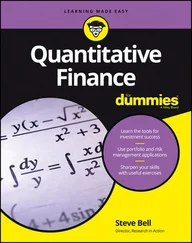Michael Taillard - Corporate Finance For Dummies
Здесь есть возможность читать онлайн «Michael Taillard - Corporate Finance For Dummies» — ознакомительный отрывок электронной книги совершенно бесплатно, а после прочтения отрывка купить полную версию. В некоторых случаях можно слушать аудио, скачать через торрент в формате fb2 и присутствует краткое содержание. Жанр: unrecognised, на английском языке. Описание произведения, (предисловие) а так же отзывы посетителей доступны на портале библиотеки ЛибКат.
- Название:Corporate Finance For Dummies
- Автор:
- Жанр:
- Год:неизвестен
- ISBN:нет данных
- Рейтинг книги:4.5 / 5. Голосов: 2
-
Избранное:Добавить в избранное
- Отзывы:
-
Ваша оценка:
- 100
- 1
- 2
- 3
- 4
- 5
Corporate Finance For Dummies: краткое содержание, описание и аннотация
Предлагаем к чтению аннотацию, описание, краткое содержание или предисловие (зависит от того, что написал сам автор книги «Corporate Finance For Dummies»). Если вы не нашли необходимую информацию о книге — напишите в комментариях, мы постараемся отыскать её.
Corporate Finance For Dummies,
Corporate Finance For Dummies,
Corporate Finance For Dummies — читать онлайн ознакомительный отрывок
Ниже представлен текст книги, разбитый по страницам. Система сохранения места последней прочитанной страницы, позволяет с удобством читать онлайн бесплатно книгу «Corporate Finance For Dummies», без необходимости каждый раз заново искать на чём Вы остановились. Поставьте закладку, и сможете в любой момент перейти на страницу, на которой закончили чтение.
Интервал:
Закладка:
Finding Financial Zen
The information included in the balance sheet allows you to determine the very value of a company, as well as to whom that value is allocated as the company either thrives or fails in its pursuits. Everything that contributes to the value of a single corporation is either provided by the owners (the shareholders) or the lenders (who the corporation is obligated to repay). It is for this reason that those in corporate finance must work hard to find the appropriate balance between the two (discussed in more detail in Chapter 17).
By applying this information, you can determine a company’s ability to pay back loans, the value of the company’s stock, and the expected return for investors. Plus, you can use the values you get from these metrics to evaluate whether the company is worth any loans issued, how efficiently management is allocating resources, how efficient the company’s production is working, how effective a company is at managing inventory, how efficiently it sells its products, how effective it is at collecting debt, and so much more.
By itself, the balance sheet shows only metrics related to value. But when you use it with information from the income statement and the statement of cash flows, you can determine how effectively a company is using its assets to generate income, as well as how well a company may use income to pay its debts.
Chapter 5
Incoming Income
IN THIS CHAPTER
 Surveying the parts of the income statement
Surveying the parts of the income statement
 Evaluating the income statement for quality of earnings
Evaluating the income statement for quality of earnings
How can you tell whether a company is successfully generating wealth beyond the wildest dreams of its owners, providing them with levels of luxury understood only through ancient mythology, or dooming them to a life of desperate poverty from which they may never escape, or something in between? By looking at the company’s income statement. Simply put, the income statement is a financial report that describes whether a company is thriving in its pursuit of income or flushing money down the toilet.
In this chapter, I break down the income statement in the order that it’s written, starting with the total amount of money made and then going through all the additional revenues and all the costs, until I end with a profit (or loss, if your company isn’t doing so well).
Adding It Up
Income statements come in two types: single-step and multiple-step. They’re essentially the same thing except that a multiple-step income statement provides more detail, so I focus on the multiple-step version in this chapter. For a rundown of single-step income statements, see the upcoming sidebar.
SINGLE-STEP INCOME STATEMENTS
Many companies prefer to use single-step income statements, particularly for minor reports that aren’t annual or quarterly.
The big difference between the multiple-step income statement and the single-step income statement is that the single-step statement doesn’t separate costs and revenues by their source operations. Instead, it lists all income, breaking it down into net sales and other, and then lists all costs, with a total of the costs. Finally, it lists earnings before interest and taxes (EBIT), taxes, net income, and earnings per share (EPS). It’s a much shorter method of reporting earnings, but it isn’t nearly as informative as the multiple-step statement.
Corporate income statements work a lot like your personal finances: You start with the amount of money you make and then subtract all your costs to find out how much you have left to put in the bank, buy a new vacation home, or join a professional Ping-Pong team.
The main difference is that corporate income statements probably include more information overall than your personal income statement. In fact, a company’s income statement breaks down how much money it’s making versus how much it’s spending into six main categories. Together, these six categories detail the company’s costs and revenues, separating them by their source operations. I cover each of these categories in the following sections.
Gross profit
The first portion of the income statement, called gross profit, seeks to calculate the profitability of a company’s operations after direct costs. Its ultimate goal is to determine the company’s gross margin.
For example, if you’re a self-employed window washer, your margin is all the money you make for washing windows, minus the cost of the materials you used to wash those windows (for example, soap, water, and other supplies), but not the cost of your ladder because you use it over and over again.
Net sales
Net sales is all the money that a company makes from its primary operations. If the company is a retailer, then net sales includes all the money the company generates from selling retail goods. If the company is a lawn service but it also offers tree trimming, then net sales includes the money it makes from both services. However, it doesn’t include any money made from other activities outside of its core operation(s). So no counting the extra money made from selling an old lawnmower.
To get net sales, don’t subtract any costs yet. Net sales includes every last dime a company makes from sales; the costs come into play later.
 Some companies refer to net sales as gross income, income from sales, or some other similar term. Just remember that net sales is always the very first item on the income statement, regardless of what a company calls it.
Some companies refer to net sales as gross income, income from sales, or some other similar term. Just remember that net sales is always the very first item on the income statement, regardless of what a company calls it.
Cost of goods sold
To make a product or provide a service, a company has to purchase supplies. Maybe a tool manufacturer needs to buy steel. Maybe a window washing company needs to buy soap and water. Maybe a tutoring company just needs to pay its tutors. No matter what its primary operation is, every company adds up all the direct costs it incurs as a result of actually making its product or service, not including indirect costs (sales costs, administrative costs, research costs, and so on), and includes them under cost of goods sold (COGS) on the income statement. The very nature of this section lies within its name: It’s the cost a company has incurred in making or buying the goods that it has sold.
Just like the price of beer changes at the store from time to time, the costs of those things a company purchases can change. So when the things a company purchases change, it must choose how it will measure the cost of goods sold. The two primary ways a company can account for the costs of goods sold are
FIFO (first-in, first-out): With this method, a company will use the costs of those things it purchased earliest when accounting for COGS. In other words, the first inventory made or bought is the first inventory to be sold.
LIFO (last-in, first-out): With this method, a company will use the cost of those things it purchased most recently when accounting for COGS. In other words, the most recent inventory made or bought is the first inventory to be sold.
 Because the value of inventory minus costs influences all other financial statements, a company must choose to use either FIFO accounting or LIFO accounting and stick with it for everything. If a company chooses to switch from one method to another, it must describe the change, including the calculated change in value resulting from the change in method. It describes this change in the supplementary notes of at least the income statement and typically all the other financial statements, as well.
Because the value of inventory minus costs influences all other financial statements, a company must choose to use either FIFO accounting or LIFO accounting and stick with it for everything. If a company chooses to switch from one method to another, it must describe the change, including the calculated change in value resulting from the change in method. It describes this change in the supplementary notes of at least the income statement and typically all the other financial statements, as well.
Интервал:
Закладка:
Похожие книги на «Corporate Finance For Dummies»
Представляем Вашему вниманию похожие книги на «Corporate Finance For Dummies» списком для выбора. Мы отобрали схожую по названию и смыслу литературу в надежде предоставить читателям больше вариантов отыскать новые, интересные, ещё непрочитанные произведения.
Обсуждение, отзывы о книге «Corporate Finance For Dummies» и просто собственные мнения читателей. Оставьте ваши комментарии, напишите, что Вы думаете о произведении, его смысле или главных героях. Укажите что конкретно понравилось, а что нет, и почему Вы так считаете.












